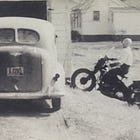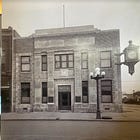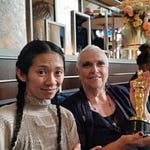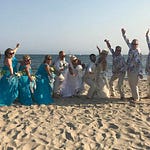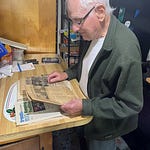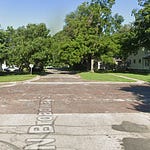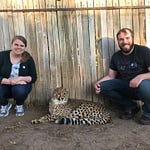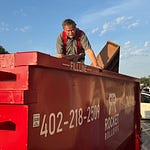By Bob Copperstone

Having caught the bi-wheeled fever from Dad’s hill-climber Harley adventures, and as I stumbled into puberty, I chafed to dip my toe into solo motorized cycling.
I got my chance when word got around in Wahoo that Lee Houfek was selling his Cushman scooter. I wanted it very badly. To my surprise, Dad bought it for me. I was only 13.
I’m sure he had a tough time winning Mom over to the scooter idea. But after all, he understood a young boy’s craving for motorized propulsion
.

And he, himself, had caught the fever during much of his early married life. Before he finally got the hill-climber, Dad was always joking to us kids about use buying him a motorcycle. He’d tease us, asking how we are coming along with a (nonexistent) “Buy Daddy a motorcycle” piggybank.
If he saw us with any coins, or if we talked about buying something else, he would say, “Oh, boy! Are you going to buy Daddy a motorcycle now?”
I took him seriously.
One spring day he saw me with a quarter in my hand. I was going to buy one of those balsa-wood glider airplanes at Kolterman’s dime store.
I knew what Daddy was going to say. He looked longingly at my quarter, and that made me very sad, because I had repeatedly failed to buy him a motorcycle. I just didn’t want to disappoint him yet again.
I looked up shyly to meet his eyes, then held up the coin in my open palm and offered in a thin voice: “Here, Daddy.”
He just stood there for the longest time. I guess I had called his bluff.
“Oh, Bobby, I was just kidding,” he said, kneeling and reaching with both hands to clasp my shoulders and pull me closer to him in a warm hug.
I don’t remember if he ever again asked me to buy him a motorcycle.
* * *
Besides my adventures on Dad’s hill-climber Harley, and his subsequent H-D hog, and my Cushman scooter, I came close to adding a Cushman Eagle.
The Eagle resembled a small-wheeled motorcycle (thus its allure). A guy would straddle it motorcycle-style instead of stepping through it. The Cushman factory in Lincoln stopped production in 1965.
My friend Ray Smith had one for sale.
This one was well-used but very attractive. New ones’ engines displaced 349cc, generating 8 horsepower, and could hit 52 mph.
But Ray’s Eagle’s engine was bored out and otherwise enriched for more power. And I was determined to exercise that power and took it for a spin..
I rode the beast northwest of town to Luther College Hill, a gravel incline that was almost as locally famous as Bodley’s Hill. (I heard that in the 1920s, bragging rights belonged to the driver of the car that could make it to the top of Bodley’s in high gear.)

Cushman, too, and we’d usually tear around nearby Mead or ride to go fishing at Silver Creek.
Unhelmeted, I paused atop the hill overlooking the Luther College campus, then gunned the gutsy engine to begin the plummet down the freshly graveled road.
Yep, the speed was there, all right. Maybe too much speed? I began to have full-speed second thoughts. I eased up on the hand throttle, and my toe almost unconsciously took the opportunity to tap the brake (I can’t remember if the Eagle had a hand brake).
But it was too late.
Even with the wind whistling past my ears, I could hear the sickening metallic sound of the drive chain snapping loose, accompanied by a terrible fishtailing and complete loss of control because of the locked rear wheel.

The only way I could go now was down. And down I went, pancaking the machine, as gravity dictated.
I must have been thrown free and avoided being ground up under the skidding, heavy bike frame and engine.
I don’t know how long I lay sprawled flat and hurting in the middle of the road. I looked up the hill and spotted a cloud of dust coming right at me. A rattling, vintage 1920s sedan shuddered to a skidding stop right in front of me.
The driver immediately jumped out and began tongue-blistering me for blocking his road. I’m sure he wouldn’t have stopped at all if he could have gotten past the accident scene.
I didn’t try to argue with him -- I was too busy bleeding.
I recovered my senses and, limping a little and hurting all over, I skidded and wrestled the machine off the road. The broken chain had wrapped around the axle and locked the rear wheel tight.
My new friend didn’t even offer to help me, nor did he ask after my health, but continued to grouse about being delayed.
The topic of his rant concerned the value, if any, in the continuation of my existence here on earth. (He was against it).
I recognized his angry red face as that of a local farmer, Chauncey Beadle, whose son, George Beadle, was a Nobel Prize recipient and, later, one of Wahoo’s Five Famous Sons.
(That Nobel Prize, for plant genetics, was awarded in 1958, the same year Chauncey and I met on Luther College Hill.)

I don’t remember how I got the wounded machine back to Ray Smith, or how I explained its sorry state. I never did offer to buy it.




